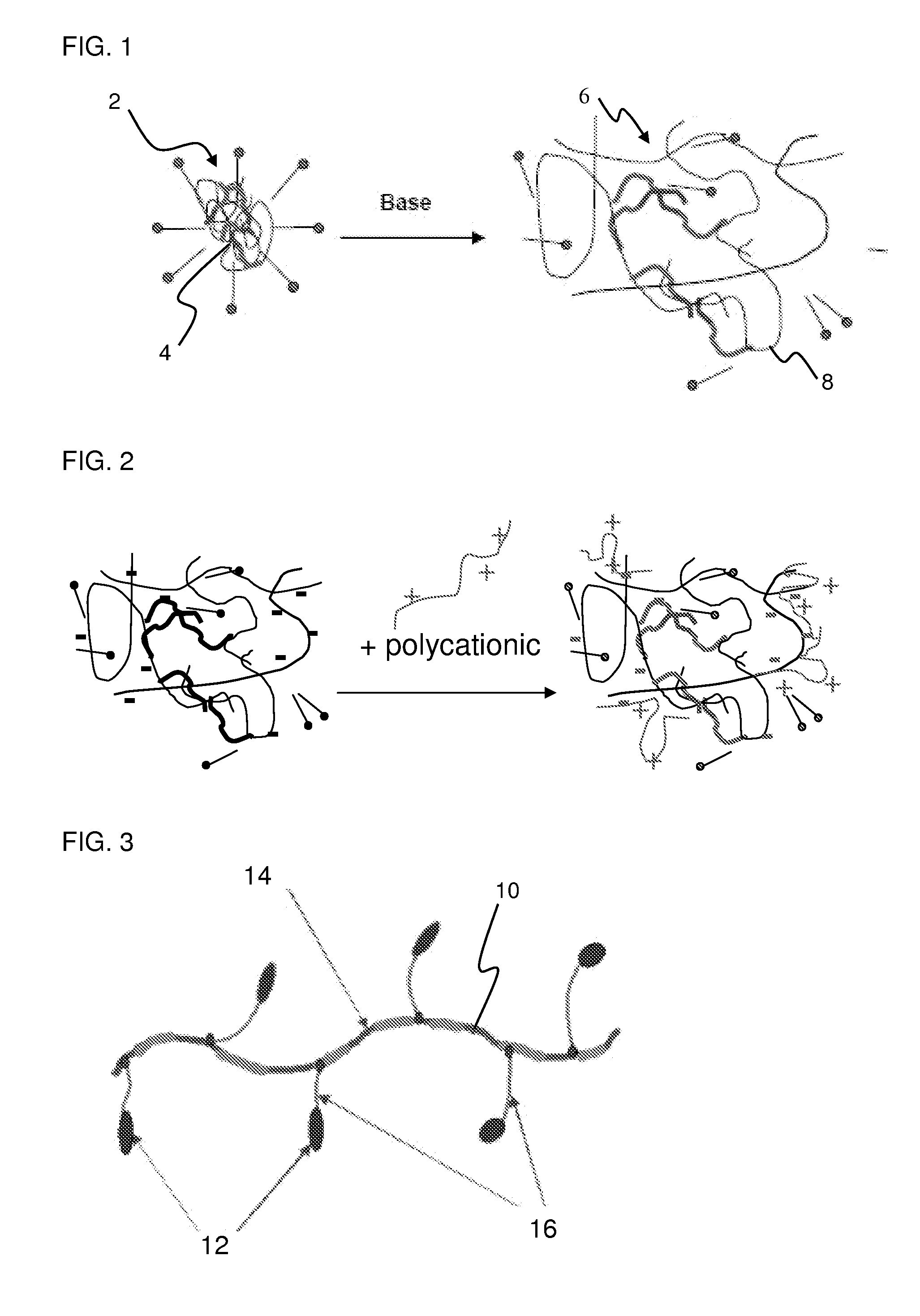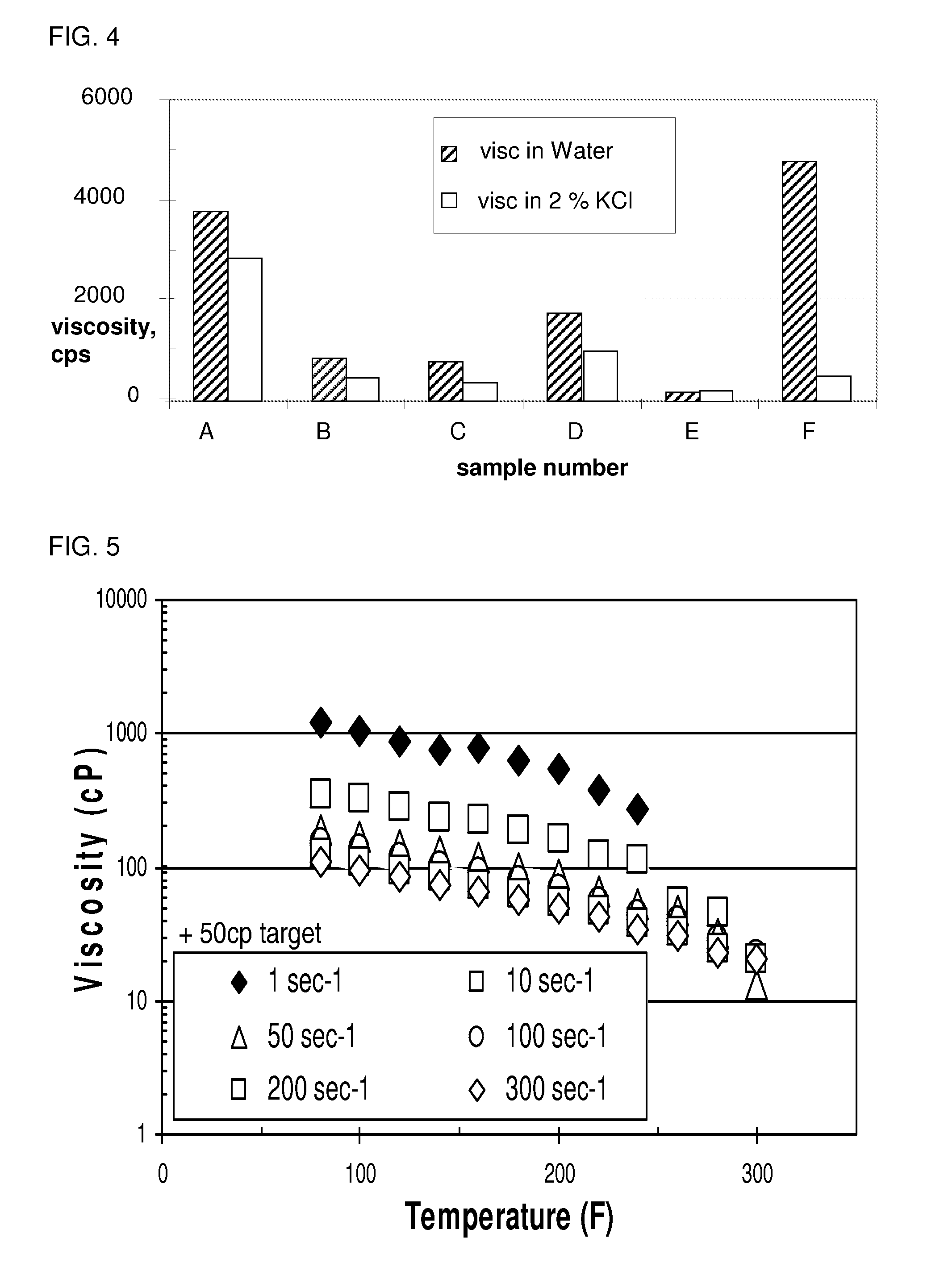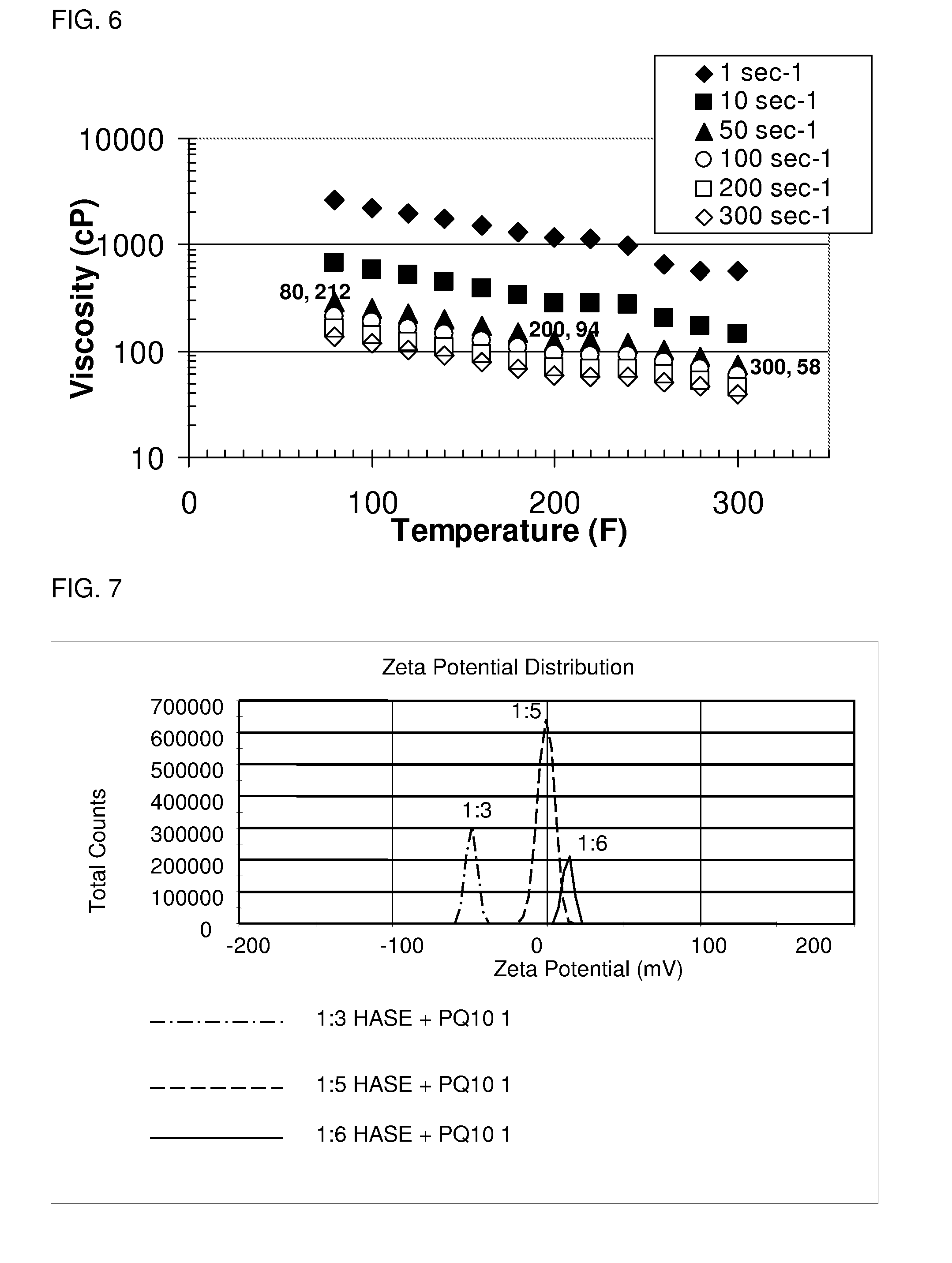Rheology modifier compositions and methods of use
a technology of modifiers and compositions, applied in the field of rheology modifier polymers, can solve the problems of large quantity of oil within the formation, too viscous to be efficiently recovered, and insufficient polymer us
- Summary
- Abstract
- Description
- Claims
- Application Information
AI Technical Summary
Benefits of technology
Problems solved by technology
Method used
Image
Examples
example 1
[0838]Several HASE polymers listed in TABLE 6 were screened at room temperature. The HASE (Hydrophobically-modified Alkali Swellable Emulsion) polymer was composed of hydrophilic groups (methacrylic acid and ethyl acrylate) and hydrophobic groups (Macro monomer I and, in some cases, Macro monomer II). The HASE Polymers listed in TABLE 6 were synthesized by emulsion polymerization using conventional radical polymerization. They contain methacrylic acids which contains carboxylic groups which make the polymer anionic.
[0839]The compositions of HASE polymers used are presented in TABLE 6.
TABLE 6InternalChainPO / EOHASEMethacrylicEthylMacrocrosstransferunitsSampleacidAcrylateMonomer ILinker1agent2InitiatorMacronumbers(phm)(phm)(phm)(grams)(grams)(gr)Monomer IA41.055.04.0——0.3755 / 15B41.055.04.0——0.37510 / 25 C41.055.04.0——0.37515 / 40 D41.055.04.0——0.3755 / 25E41.055.04.00.560.810.3755 / 25F41.055.04.00.56—0.3755 / 251Ethylene glycol dimethyl acrylate21-Dodecanethiol3The term “phm” means monomers per...
example 2
3% HASE Polymer A, pH 12, 2% KCl
[0848]The following HASE polymers listed in TABLE 8 were formulated. TABLE 9 provides additional information.
TABLE 8Composition of HASE polymerInternalEthylMacroMacroCross-MethacrylicAcry-Mon-Mon-linkerInitiatorHASEAcidlateomeromerMassMassSample(phm)**(phm)I (phm)II (phm)(grams)*(grams)A40.8355.174.000.375G40.8355.174.000.5570.375H40.8355.174.001.1140.375I37.3452.661.678.330.25J39.8356.172.002.000.25K37.3452.665.005.000.25L37.3452.661.678.330.124*The internal crosslinker was ethylene glycol dimethyl acrylate**The term “phm” means monomers per hundred monomers of polymer.
TABLE 9Monomer Emulsion Composition by WeightEthylMacroAcry-MacroEthyleneMon-TotalMethacryliclateMonomerglycolomerHASEMassAcid(wtIdimethylIISample(grams)(grams)%)(wt %)acrylate(wt %)A320.3315.7825.836.12G320.9115.7425.796.110.17H321.4615.7225.746.100.35I285.9816.7127.041.718.51
[0849]The resulting HASE polymer had approximately 30% active level of polymer. The procedure of making the HA...
example 3
3 wt. % HASE Polymer G pH 11 in 2 wt. % KCl
[0857]FIG. 6 shows data from a test of a mixture of 3 wt. % HASE polymer G at a pH 12 with 2 wt. % KCl and the crosslinker ethylene glycol dimethacrylate (EGDM). This shows HASE polymer G can achieve a viscosity of 50 cp at 220-230° F.
PUM
| Property | Measurement | Unit |
|---|---|---|
| Temperature | aaaaa | aaaaa |
| Temperature | aaaaa | aaaaa |
| Temperature | aaaaa | aaaaa |
Abstract
Description
Claims
Application Information
 Login to View More
Login to View More - R&D
- Intellectual Property
- Life Sciences
- Materials
- Tech Scout
- Unparalleled Data Quality
- Higher Quality Content
- 60% Fewer Hallucinations
Browse by: Latest US Patents, China's latest patents, Technical Efficacy Thesaurus, Application Domain, Technology Topic, Popular Technical Reports.
© 2025 PatSnap. All rights reserved.Legal|Privacy policy|Modern Slavery Act Transparency Statement|Sitemap|About US| Contact US: help@patsnap.com



